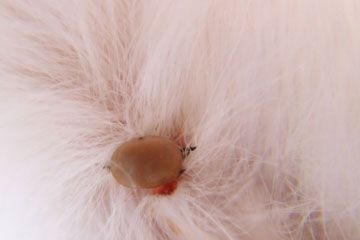If you're a long-time cat owner -- especially of outdoor cats -- you may be all too familiar with the sight of what appears to be small grains of rice around your cat's anus. Ewww, worms!
Just as in humans, it's normal and healthy for a cat's stomach and intestines to contain a variety of microscopic organisms. But sometimes the eggs of parasites get into your cat's digestive system, developing into adult worms that feed off the food going through his or her gut and steal its nutrition. Worms produce more eggs that are shed in the cat's feces and spread to other hosts.
Advertisement
The most common unwanted tenants of your cat's digestive tract are roundworms, tapeworm and Coccidia. Roundworms look like short strands of thick white thread, and a cat with a particularly bad case may actually vomit them. Adult roundworms lay eggs that can be seen under a microscope in a cat's stool. Tapeworms attach to the lining of the cat's intestine by their heads and grow by segments. Each egg-containing segment is shed with the cat's stool. Sometimes, the tapeworm segments -- the "grains of rice" mentioned above -- can be found clinging to the cat's anus. Coccidia are actually microscopic one-celled organisms that live and breed in the cat's intestines.
So where did the worms come from? Fleas are one likely culprit -- tapeworms sometimes lay eggs in them. When a cat swallows the flea with the tapeworm eggs while grooming, voila -- infestation. Similarly, a cat who goes outdoors is likely to come in contact with eggs (or spores in the case of Coccidia) shed in the infected cat's stool. Another common pathway comes in the form of infected birds, mice or other unfortunate small creatures that your cat captures and eats.
You can't really treat worms effectively in your cat at home without help from your vet. However, you can learn what to look for when you're trying to figure out if your cat has worms.
Advertisement



